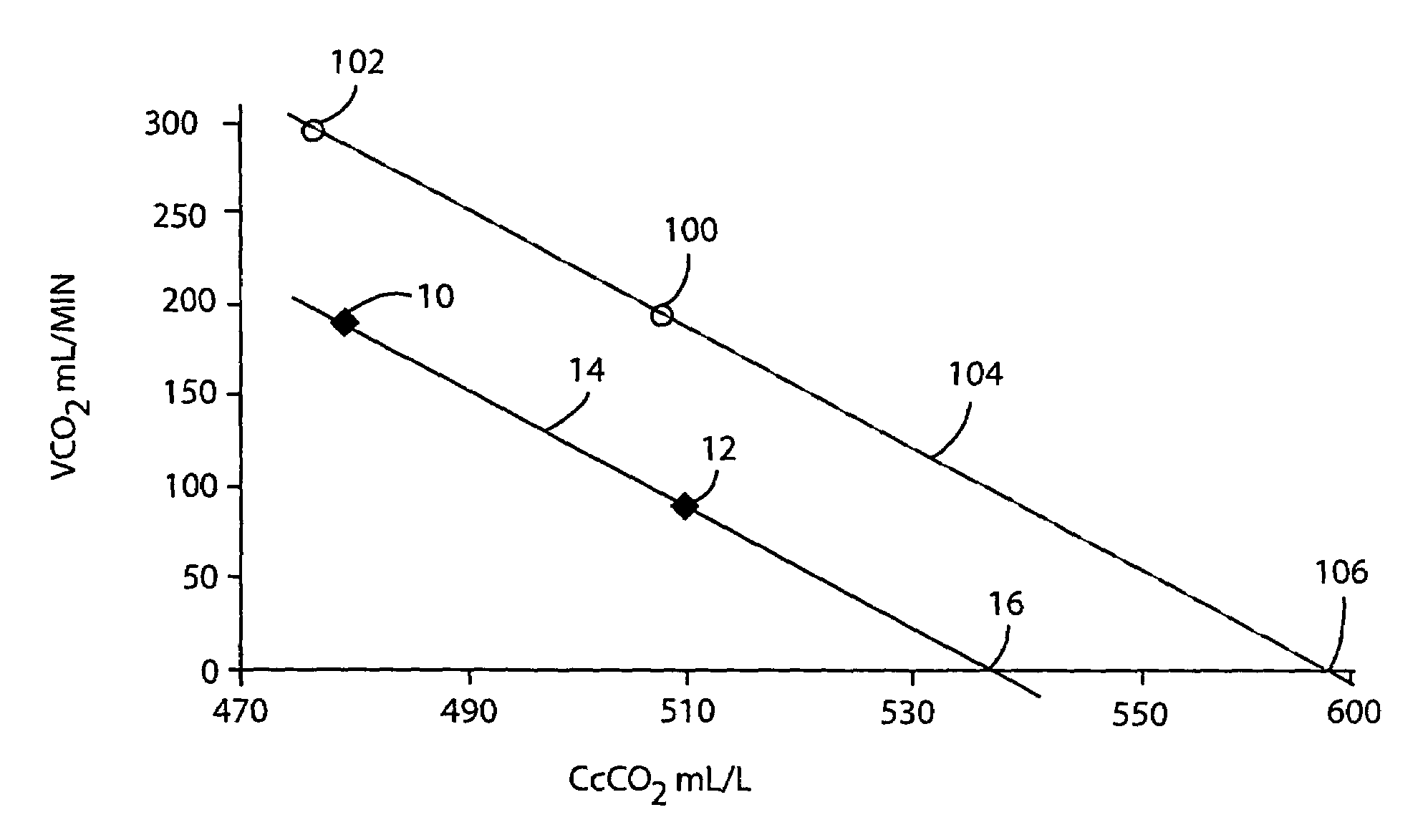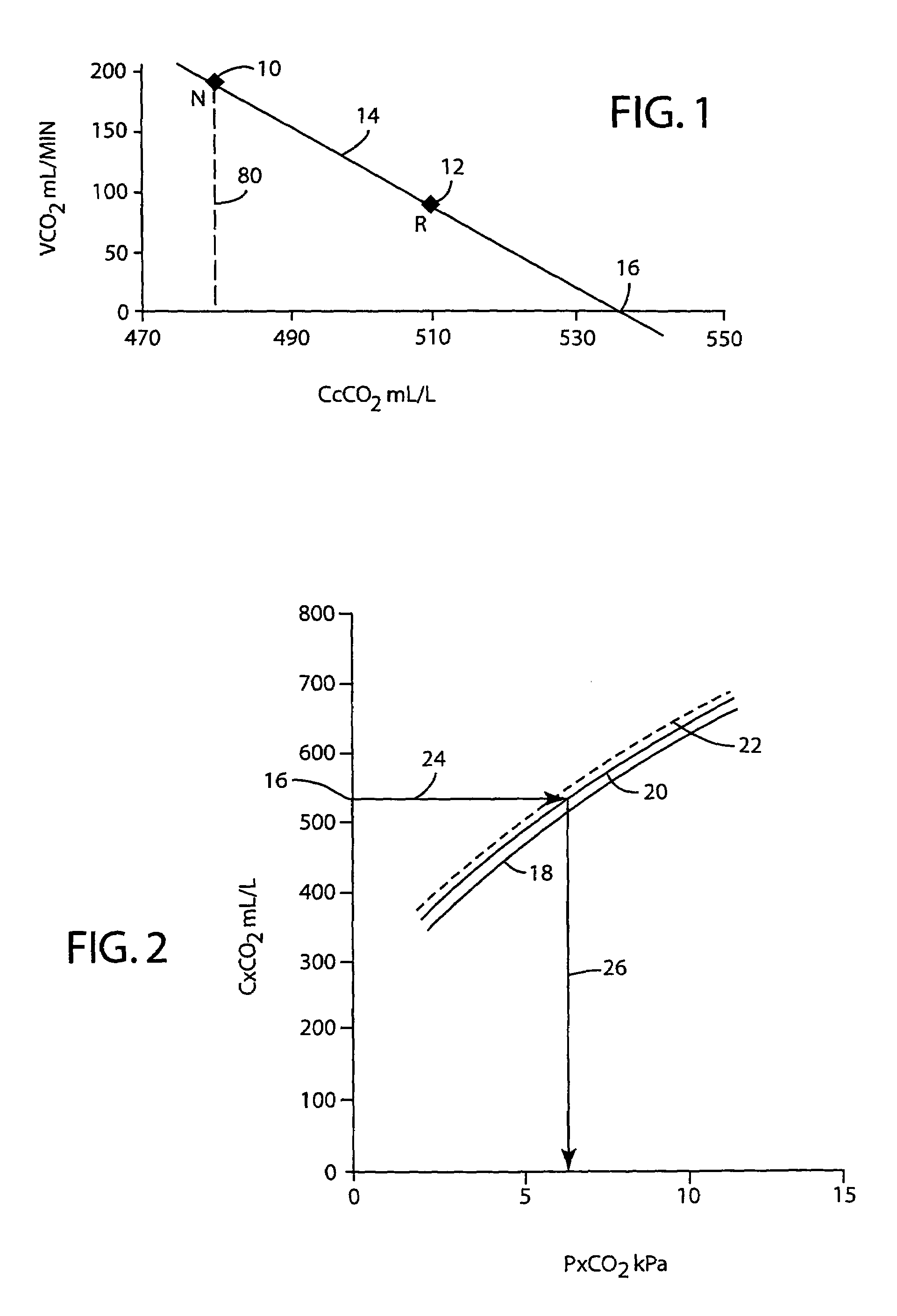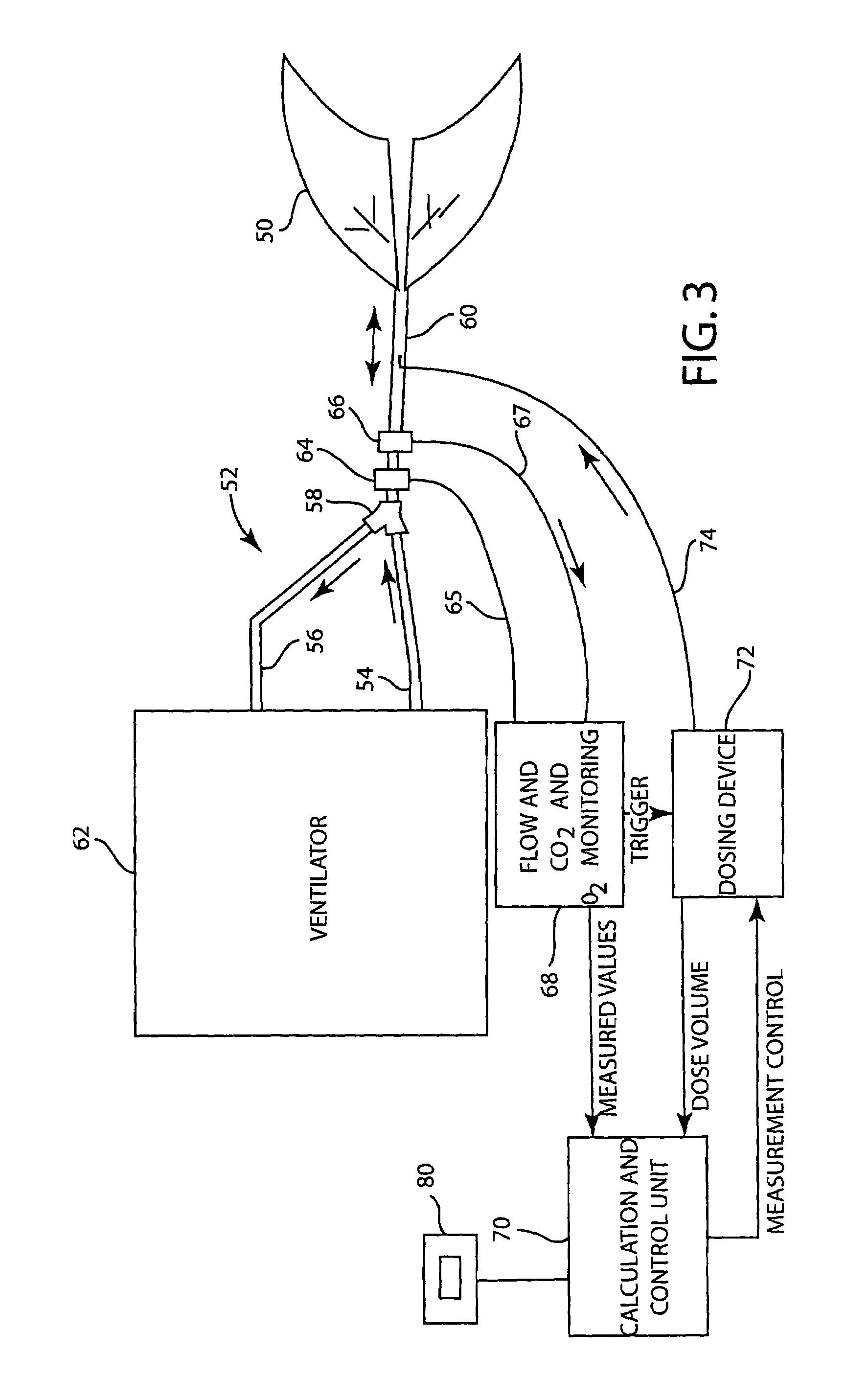Non-invasive determination of conditions in the circulatory system of a subject
a technology of the circulatory system and non-invasive determination, which is applied in the field of improved methods for non-invasive determination of conditions in the circulatory system of subjects, can solve the problems of reducing the gas exchange efficiency of the lungs, increasing the pulmonary shunt, and potentially adverse consequences for subjects, and achieves the effect of improving accuracy
- Summary
- Abstract
- Description
- Claims
- Application Information
AI Technical Summary
Benefits of technology
Problems solved by technology
Method used
Image
Examples
Embodiment Construction
[0055]The basic principles on which the method of the present invention is based are as follows. For one or more normal (N) breaths of the subject, values are obtained for the amount of CO2 released from the blood (VCO2N) and for a quantity indicative of the end capillary blood CO2 content, for example CcCO2N. One or more values for the same quantities are obtained under conditions of reduced (R) gas exchange in the lungs of the subject, to comprise VCO2R and CcCO2R values. The CO2 content of the inhaled breathing gases may be increased to obtain the latter values and thereafter reduced to that for normal breathing.
[0056]The normal (N) breathing values (N) and reduced (R) gas transfer values (R) are used as data points for a regression analysis, such as a linear regression analysis. Graphically, the data points may be plotted on a graph in which the end capillary CO2 blood quantity values, such as CcCO2, are scaled along the abscissa and values for the released amount of CO2 (VCO2) ...
PUM
 Login to View More
Login to View More Abstract
Description
Claims
Application Information
 Login to View More
Login to View More - R&D
- Intellectual Property
- Life Sciences
- Materials
- Tech Scout
- Unparalleled Data Quality
- Higher Quality Content
- 60% Fewer Hallucinations
Browse by: Latest US Patents, China's latest patents, Technical Efficacy Thesaurus, Application Domain, Technology Topic, Popular Technical Reports.
© 2025 PatSnap. All rights reserved.Legal|Privacy policy|Modern Slavery Act Transparency Statement|Sitemap|About US| Contact US: help@patsnap.com



